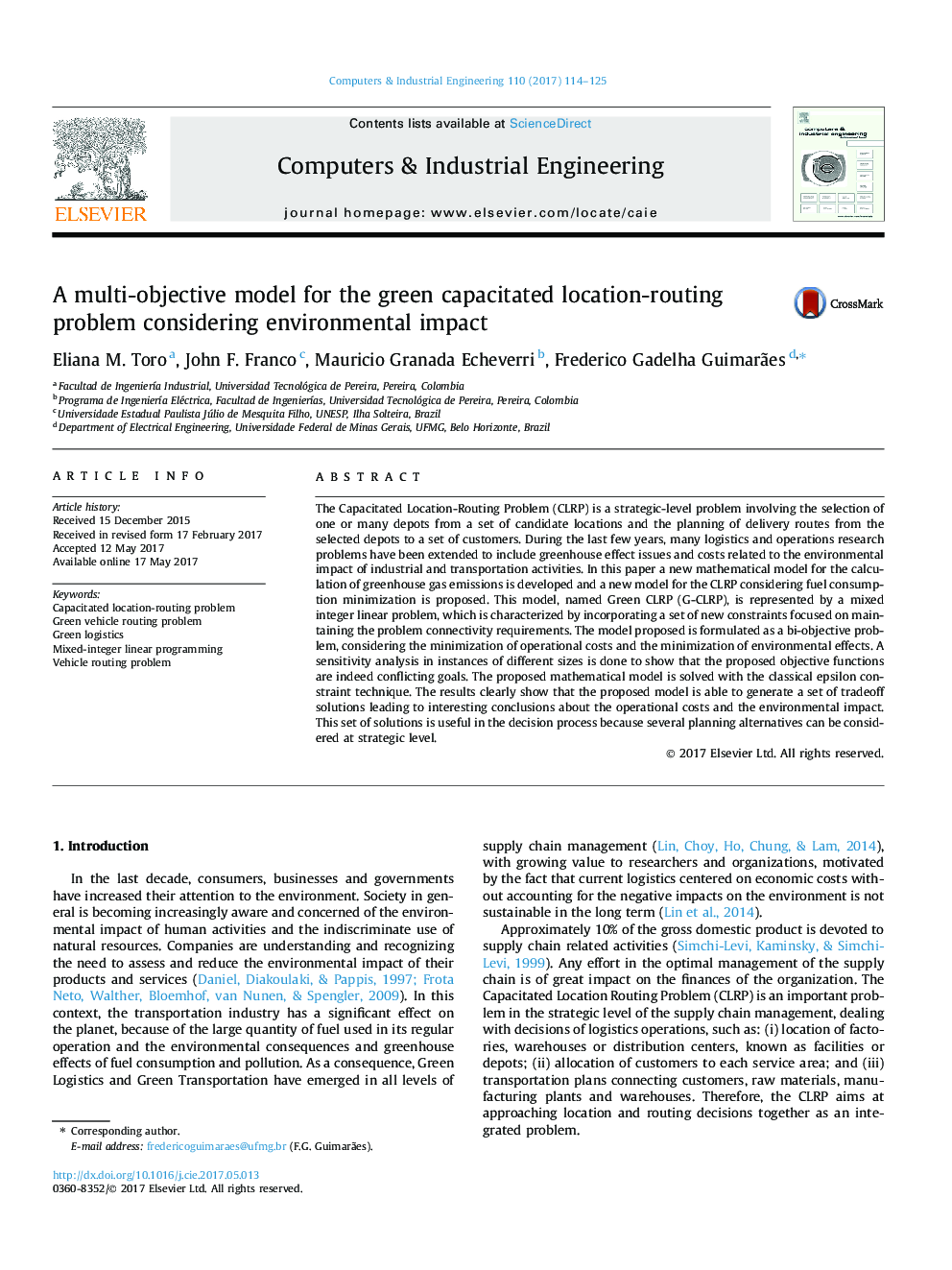| کد مقاله | کد نشریه | سال انتشار | مقاله انگلیسی | نسخه تمام متن |
|---|---|---|---|---|
| 5127480 | 1489056 | 2017 | 12 صفحه PDF | دانلود رایگان |
- The Capacitated Location-Routing Problem considering environmental impact is proposed.
- A new model for computing greenhouse gas emissions in vehicle routing is proposed.
- The Green CLRP is formulated as a bi-objective mixed integer linear programming.
- Using more vehicles can lead to large fuel economy in the long term and hence less emission.
- More vehicles in shorter routes and prioritizing high demand clients lead to less emission.
The Capacitated Location-Routing Problem (CLRP) is a strategic-level problem involving the selection of one or many depots from a set of candidate locations and the planning of delivery routes from the selected depots to a set of customers. During the last few years, many logistics and operations research problems have been extended to include greenhouse effect issues and costs related to the environmental impact of industrial and transportation activities. In this paper a new mathematical model for the calculation of greenhouse gas emissions is developed and a new model for the CLRP considering fuel consumption minimization is proposed. This model, named Green CLRP (G-CLRP), is represented by a mixed integer linear problem, which is characterized by incorporating a set of new constraints focused on maintaining the problem connectivity requirements. The model proposed is formulated as a bi-objective problem, considering the minimization of operational costs and the minimization of environmental effects. A sensitivity analysis in instances of different sizes is done to show that the proposed objective functions are indeed conflicting goals. The proposed mathematical model is solved with the classical epsilon constraint technique. The results clearly show that the proposed model is able to generate a set of tradeoff solutions leading to interesting conclusions about the operational costs and the environmental impact. This set of solutions is useful in the decision process because several planning alternatives can be considered at strategic level.
Journal: Computers & Industrial Engineering - Volume 110, August 2017, Pages 114-125
